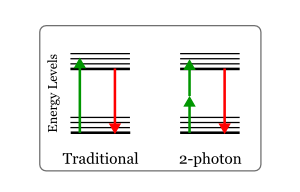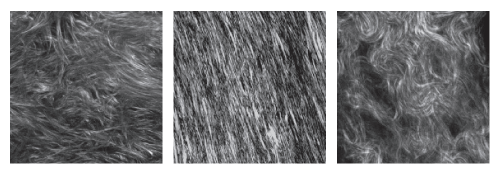LSM 510 Multiphoton

Stand:
Zeiss Observer Z1
Laser Lines:
- 458
- 477
- 488
- 514
- 561
- 633
- 800
Objectives:
Other Features:
Application Notes:
Fluorescent microscopy relies upon excitation photons having enough energy to excite fluorophores. Unfortunately, the whole sample is exposed to the excitation light, causing scattering, photobleaching and sample damage.

Two-photon (2P) microscopy excites samples with a lower-energy laser for reduced scattering and less bleaching. Two co-incident photons, each with lower energy, excite the fluorophore. This happens only where the beam is focussed, reducing the confocal volume and the optical section.
Another useful feature of the multiphoton microscope is the ability to perform second-harmonic imaging microscopy (SHIm). Many biological structures, such as collagen fibres, produce a strong second-harmonic signal, without the need for exogenous staining.
As a result, SHIm is used extensively in research and diagnostics, when studying diseases that affect connective tissue such as cancer and rhumatoid arthritis.

SHIm of different tissues, (L to R) mouse dermis, mouse bone and human ovary.



